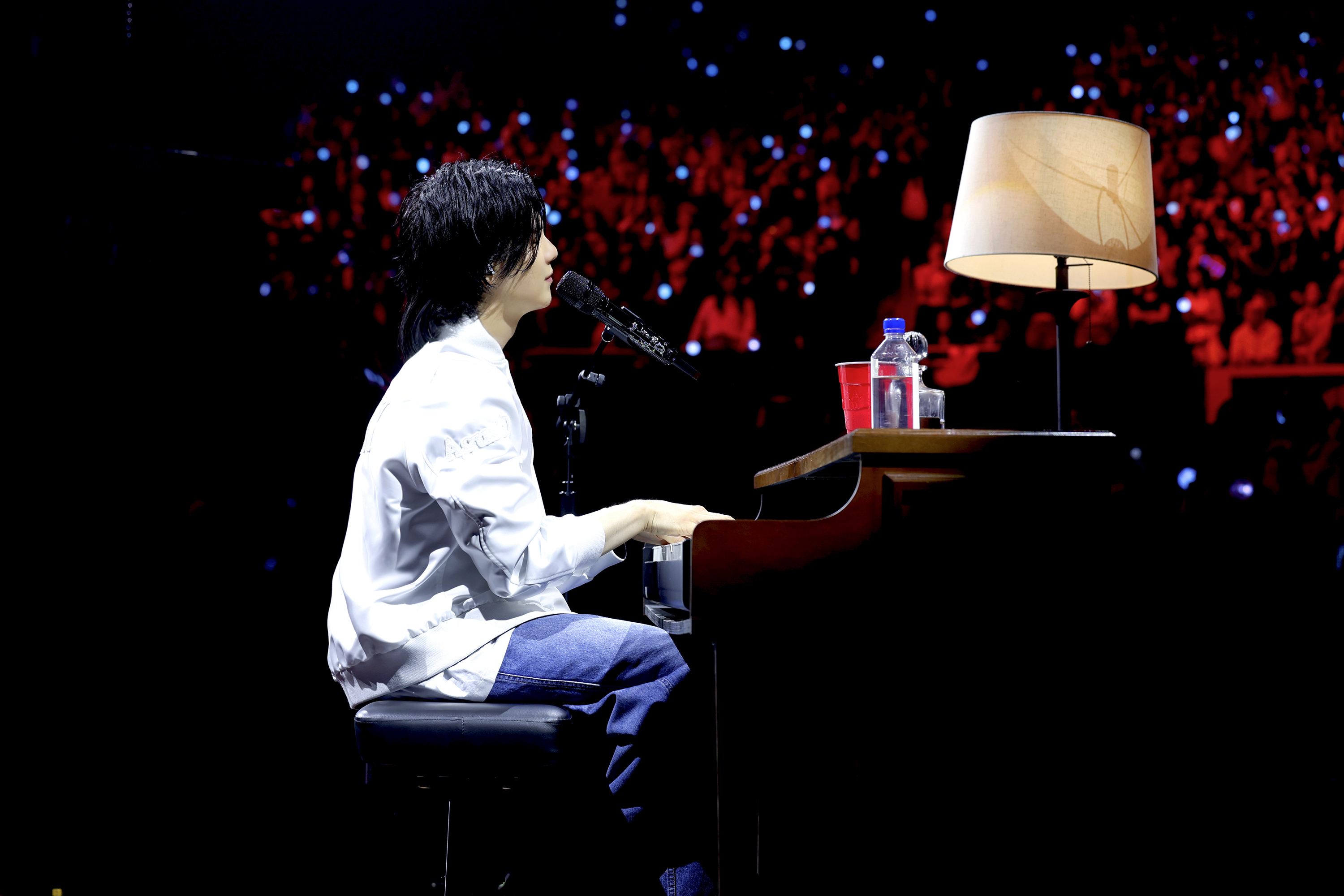
SUGA became the first in BTS to go on a solo world tour with “SUGA | Agust D TOUR D-DAY” (We will refer to it as “D-DAY” from now on). Just as the title suggests, the tour showcases the Agust D Trilogy, consisting of Agust D (2016), D-2 (2020), and D-Day released in April this year. The concerts serve as a record of SUGA’s life over the past seven years or more. It is a page that transparently reveals his current self and also “a very honest performance” according to his words. With only the encore shows remaining, we have drawn up a “D-DAY” tour report including detailed behind-the-scenes and comments from SUGA about how he put his concert together.
1. Tour dates
2. The set list
-
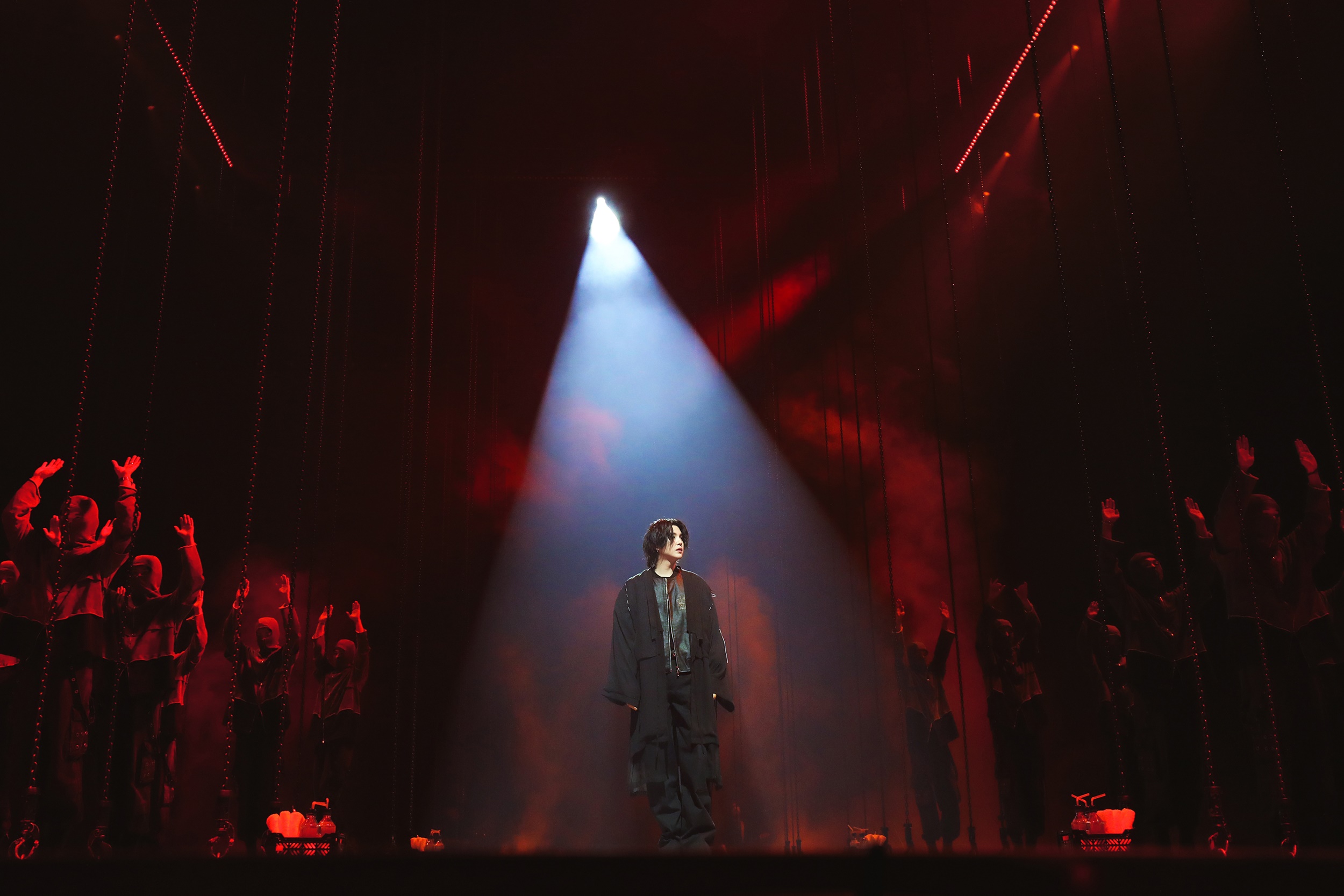 © BIGHIT MUSIC
© BIGHIT MUSIC
3. Behind the scenes
-
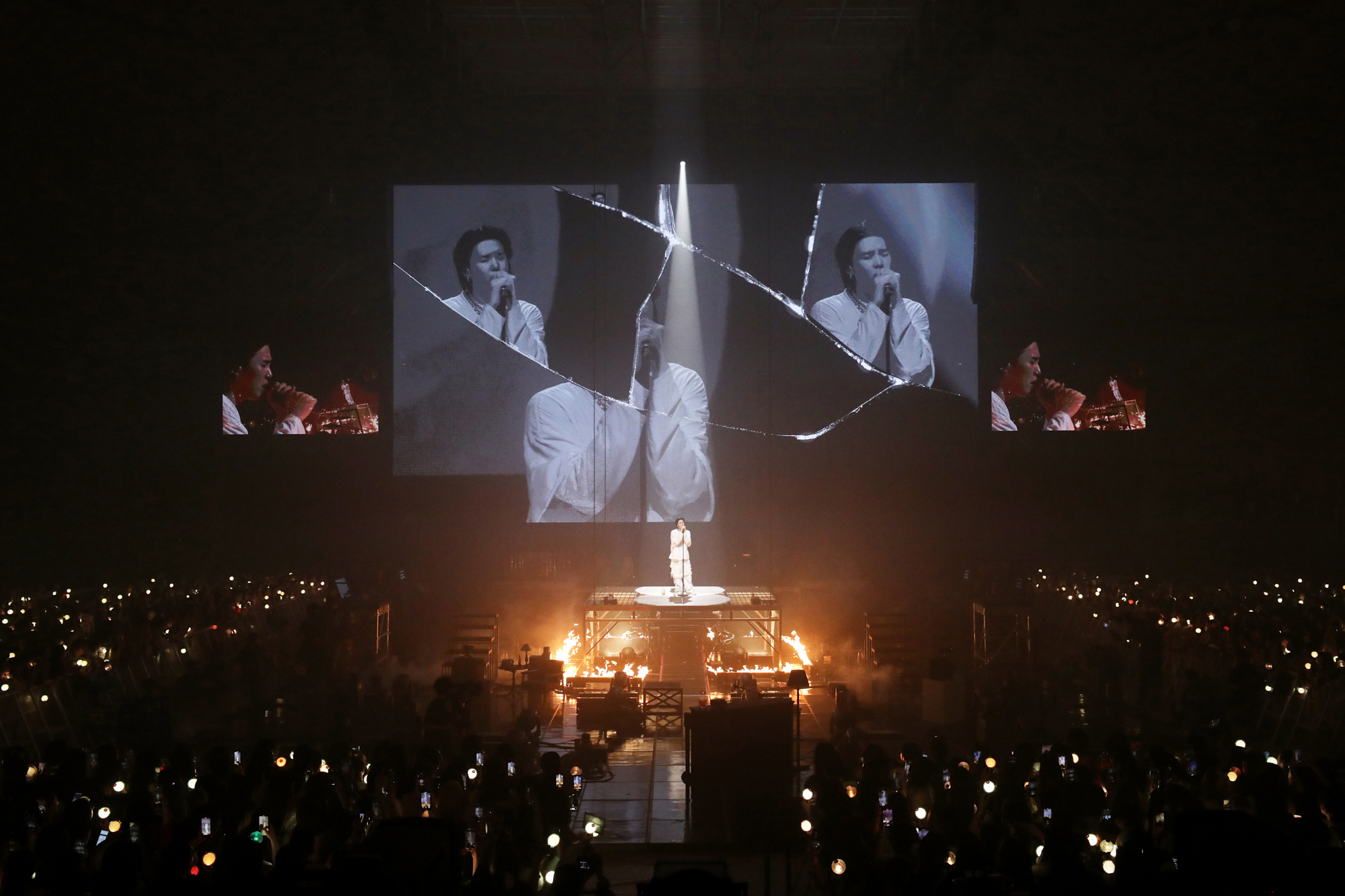 © BIGHIT MUSIC
© BIGHIT MUSIC
“Whether it’s SUGA, Agust D, or Min Yoongi, I think this performance embodies the essence of who I am as a person.” SUGA refers to the show as “the integration of all the data I’ve accumulated since I first stepped on the stage 15-16 years ago.” Considering that Agust D’s music is based on documentation of SUGA’s personal life, the show had to start out from the “person” SUGA is. “While preparing for the concert, I had many conversations with SUGA. It was a process of synchronizing myself to SUGA as a person. We talked about past memories, current thoughts, and the future.” says Ha Jung Jae. According to the Performance Directing Team 1 representative,“It was impossible for the stage setting, production, and direction to move separately” and that is why the entire staff, including SUGA, “had to work together from the very beginning.” Before the first song “Haegeum” starts, SUGA is supported by the dancers as he ascends to the stage, and after “AMYGDALA”, he collapses and is carried offstage.
-
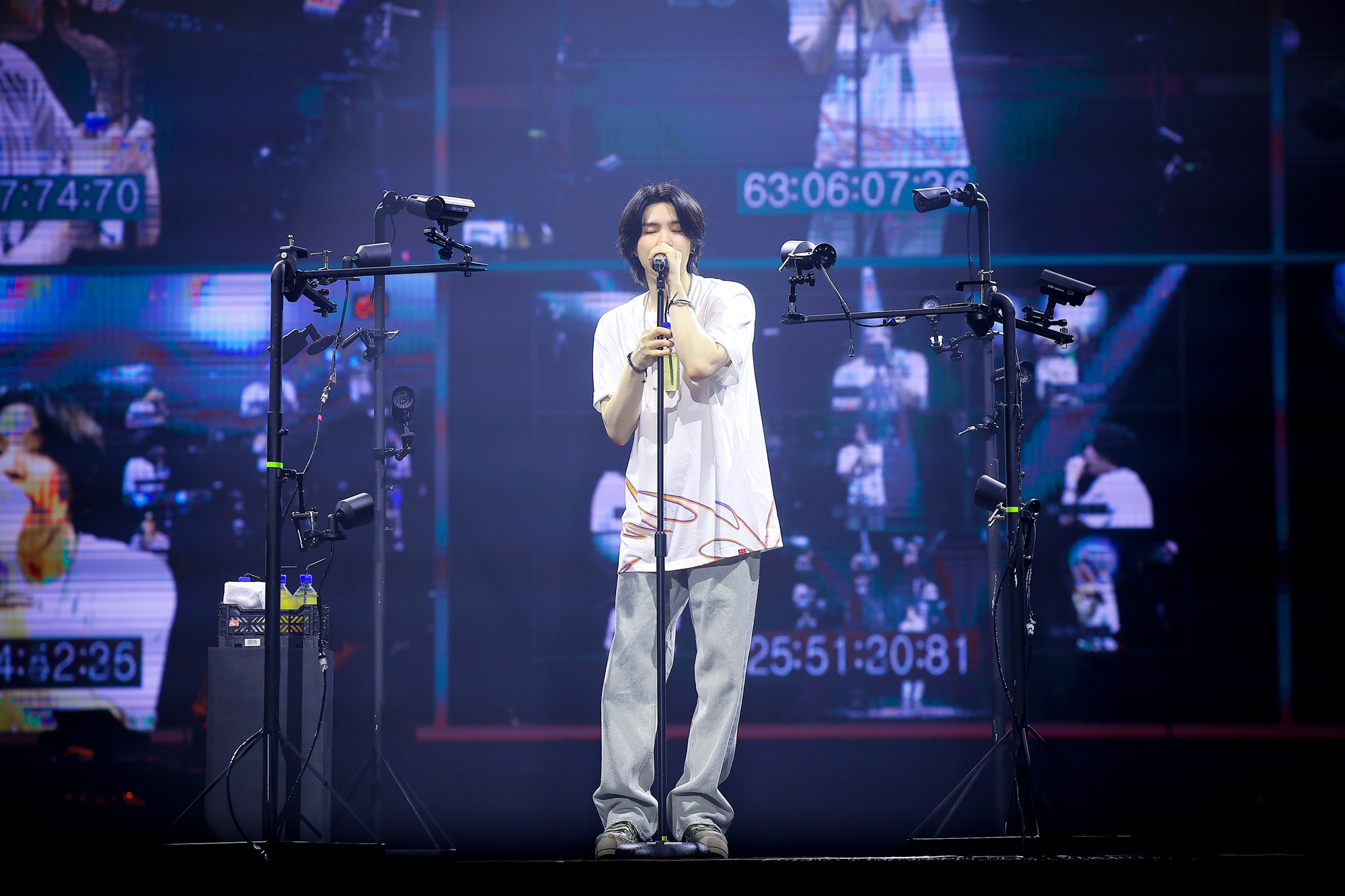 © BIGHIT MUSIC
© BIGHIT MUSIC
According to Ha Jung Jae, “It all started with wanting to break the mold.” The tour itself was a process of constantly breaking the mold. Ha Jung Jae explained the intention behind the stage production, stating, “In BTS concerts, there is an unspoken rule that the stage should have a 17-meter-wide and 10-meter-long space to accommodate a minimum of seven members and 20 dancers. So this time, we thought we’d eliminate the performance area required for synchronized choreography.” Starting with “give it to me”, a portion of the stage panels becomes entangled with wires and begins to ascend to the ceiling, and as the show progresses, more panels disappear. By the end of the show, there is only enough space for SUGA to stand still. The Performance Directing Team 1 representative says, “Limitations in using the stage space made the performance design not very easy, but I saw the space under the stage as available, considering that the audience had a 360-degree view.” That is why during “Interlude : Shadow”, the dancers use the floor beneath the stage to perform and create a mirage-like backdrop around SUGA during “People Pt.2 (feat. IU).” All of this is part of the journey toward liberation. When asked about his intention of designing the stage in a way that exposes its rustic steel structure that gives an impression of being built crudely without a graceful or flashy appearance, Ha Jung Jae said, “I wanted to build a conceptually driven stage, a stage born out of necessity. By the time the show reaches near the end, I wanted everything to be destroyed, burned, erased, and reduced to the primordial stage of “zero (O).” He also explained that the staff’s action of seemingly dismantling the stage as “The Last” performance comes to an end is intended to make the audience perceive the stage devices as “unnatural, created elements” and convey the desire to “eliminate everything unnatural.”
“A production trying to break with the past”, as the Performance Directing Team 1 representative says, is a reflection of the intention of SUGA’s voluntary elimination and liberation of all the personas created by SUGA himself. This is why Ha Jung Jae compares the storytelling of the VCRs where SUGA’s many personas kill each other to a potter “repeating the process of making and breaking the pottery.” For example, the hand with chains in the visual playing behind SUGA during “give it to me” belongs to the 3D-modeled SUGA that appears on the screen during “Agust D,” implying that another SUGA is watching over the performing SUGA from outside the stage. This is to convey the message that everything offstage and onstage are done by SUGA himself. As for SUGA’s calm exit without any ending remarks or farewells immediately after performing “The Last”, Ha Jung Jae says, “the moment the song ends, we cut off everything even before SUGA exits the stage. So, there’s no background music, and lights are turned on immediately, cutting off any lingering emotions from the performance. And as SUGA turns around and walks away at that moment, those three seconds show the real SUGA. We wanted the audience, staff, and SUGA to just be themselves for that fleeting moment.” The “fleeting moment”, as described by Ha Jung Jae, seems to embody the liberation from the obligation to show and convey something in a performance. By the end of the performance, which shows SUGA’s present self through the beauty of empty space, SUGA finally reaches a moment of liberation where he breaks free from the names he has created in the past and is reborn. “Through this ‘D-DAY’ tour, I was able to release my pent-up passion and love for performing, which have been suppressed during the three years of the pandemic. And I feel that this tour itself is a ritual and act of forgiving all my past selves.”
4. ARMY
“Bringing back the music from seven years ago and performing it on stage again was made possible thanks to the love and support from so many people who have been waiting for me. It’s all because of them.” As SUGA says, the songs in the setlist “Agust D”, “give it to me”, and “The Last” are from his 2016 mixtape Agust D and they were given a new life through the tour. “This tour has been a long time in the making, so all I could think about was how much I wanted to actually start the tour,” said SUGA, recalling his anticipation before his first show in New York. “It’s been so long since the last tour. One reason I started a music career was because I loved performing on stage. So, I wanted to put the stage before anything else,” says SUGA on why he chose a tour as the main promotion for his new album, D-DAY.
For “Life Goes On”, SUGA plays the “brown piano” with a calm expression and sings, “Fortunately, our relationship hasn't changed all along / Let's greet each other, not with a bye, but hello.” The “D-DAY” tour is the moment of SUGA’s reunion with ARMY that he longed for in BTS’ “Life Goes On” and Agust D’s “Life Goes On.” “People who love his music still came to see him even though it’d been a long time since SUGA had performed there last time. It was sort of proof that ARMY was alive and well,” said Ha Jung Jae, recalling the atmosphere of Jakarta. “Thinking how much fans must have wanted to see me perform, I wanted to show them everything they wanted to see,” said SUGA. He tirelessly moved around the stage, interacting with the ARMY, and played the guitar signed by BTS members while singing “Trivia 轉 : Seesaw.”. “I wanted to show how much I’ve transformed over the last three years”, says SUGA, by playing “the guitar I took up during the pandemic.”
-
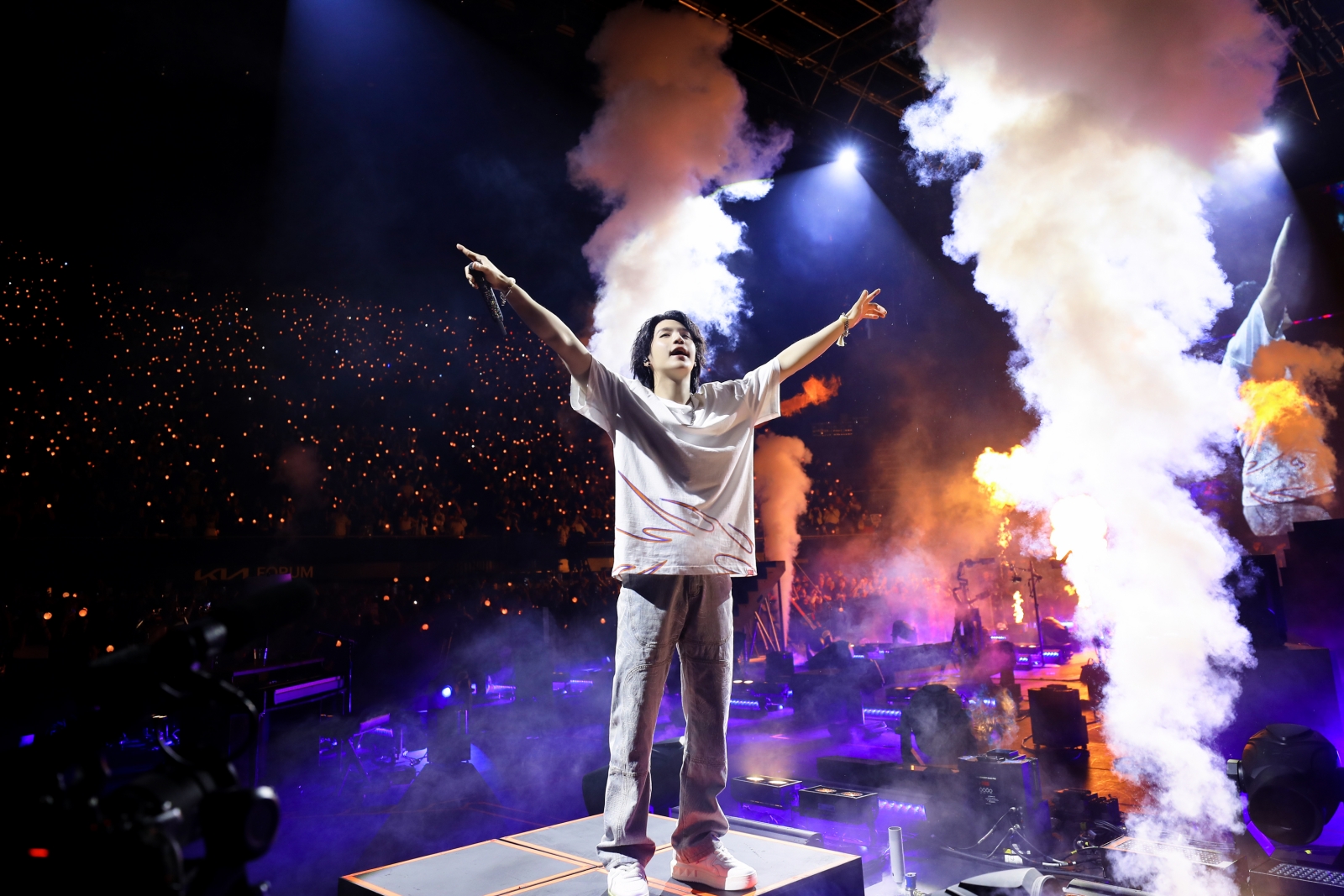 © BIGHIT MUSIC
© BIGHIT MUSIC
SUGA talked about the joy of “having a strong connection with the audience during a performance.” “During this tour, I realized that the audience should always have fun and enjoy themselves. And for that, I have to do my best on stage.” The Performance Directing Team 1 representative says that it was “a performance that both the audience and SUGA enjoyed,” noting that he could sense SUGA’s happiness, joy, and freedom even from below the stage. “Before the show, we had concerns about performing tracks from Agust D that contain personal stories and unfiltered expressions. But after seeing the audience from different countries and regions enjoying the performance in their own way, I realized that more than half of the show is created by the audience.” As Shin Daye says, during the show, SUGA sings the music of Agust D, an alter-ego he created to express his inner anxiety and anger, but with a smile and together with the audience. He passionately sings songs that contain his extremely personal stories throughout the two hours, yet there is no longer a sense of sadness or anger in his demeanor. Today’s SUGA taps lightly on his shoulder, sings, “my shoulder shattered thanks to the accident I met during my part-time job as a delivery guy” (“The Last”) and casually walks out of the stage as if nothing has happened. When asked in Suchwita about which part of his life “D-DAY” represents, SUGA replied, “I think it’s about now.” His subsequent comments about his current state of mind suggest that the “D-DAY” world tour is perhaps the clearest representation of SUGA’s “now.” “I feel more content and carefree than ever before. I’m just so happy to be able to relax and have fun during the show as if I’m going to hang out and have fun with the audience.”
5. +1
-
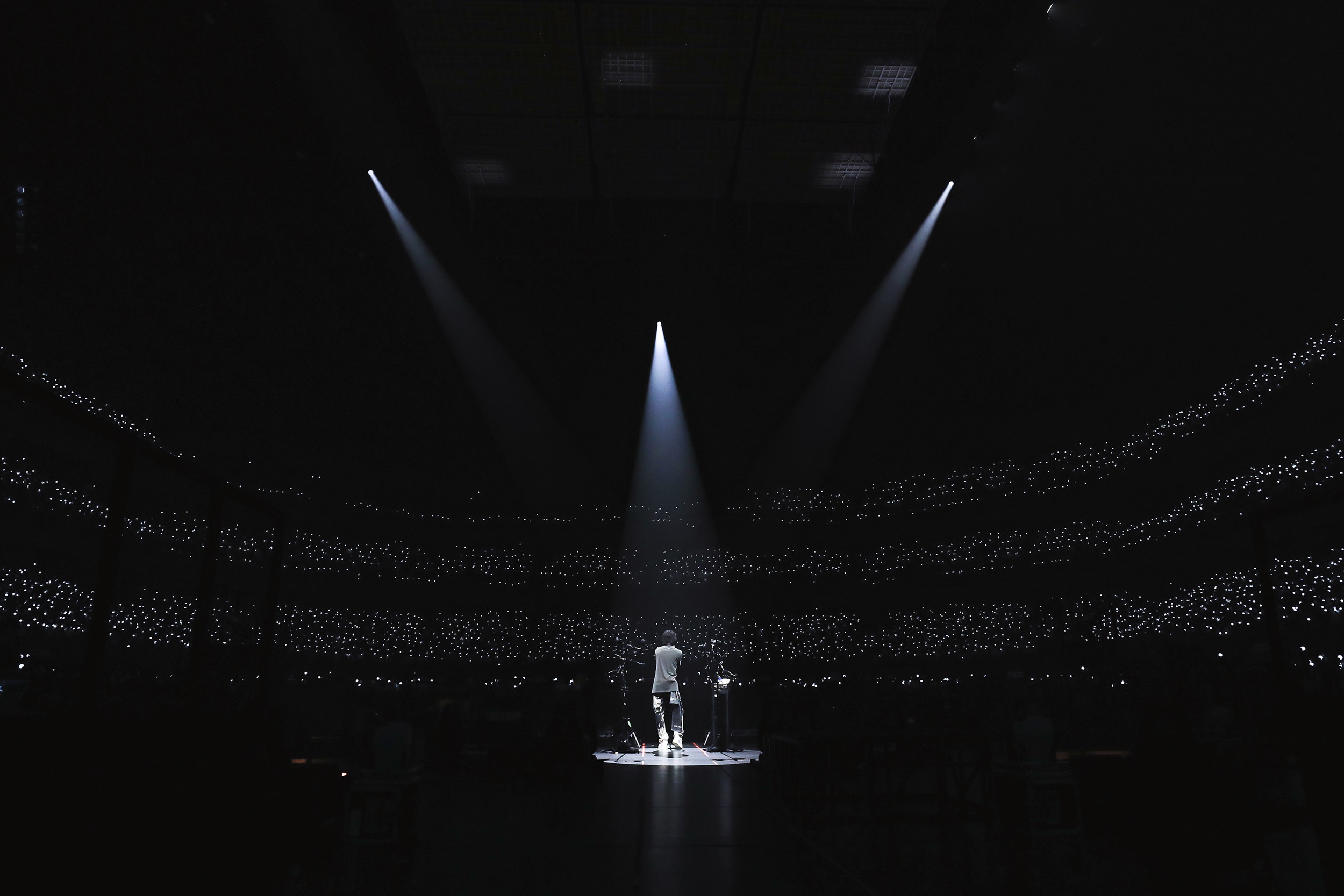 © BIGHIT MUSIC
© BIGHIT MUSIC
Unauthorized reproduction and distribution prohibited.


